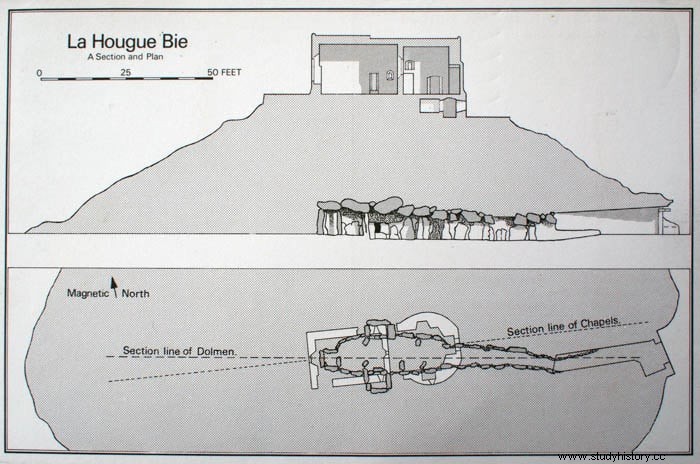On the island of Jersey, the British Crown dependency located in the English Channel west of Normandy, is La Hougue Bie , a Neolithic monument that is considered one of the oldest structures in use in Europe .
First excavated in 1925, it is known to have been a ritual site in use by at least 3500 BC Located under a mound, it is one of the best preserved monuments of the group of Armorican Passage Tombs , and one of the largest in Western Europe.
It has an 18.6-meter-long corridor covered by a mound of earth that reaches 12.2 meters in height. Inside, pottery fragments and remains of at least eight individuals were found. , as well as evidence of having been looted at some undetermined time in the past.

However, it is a ceremonial place , where religious rituals were performed, being the burials found incidental.
After the discovery and restoration of the original entrance, observations were made from the interior, at sunrise on the spring and autumn equinoxes, which revealed that the orientation of the entrance corridor allowed the sun's rays to enter the burial mound and illuminate the inner chamber.

Everything indicates that the ritual use of the place ended before the late Neolithic.
Two chapels were built on top of the mound , which are still in use, one medieval from the 12th century and the other from the 16th century. In 1792 both were engulfed by the construction of the Prince's Tower, a bastion erected by Philippe d'Auvergne to house a signal station for the British Army. This tower was demolished in 1924, just one year before excavations of the burial mound began.
However, during World War II, when the Germans occupied the Channel Islands, they built a defensive bunker whose input is still visible.

It is adjacent to the mound, and its structure juts out over that of the burial mound on which it rests.
Today it is open to the public and houses the island's Museum of Geology and Archaeology, as well as an exhibition on the workers from across Europe who worked on Jersey's defenses as prisoners of the Nazis, and the Egyptian mummy brought back by John Gosset in 1835.
It is allowed, after paying the entrance fee, to enter the dolmen and visit the main chamber, probably the only one that can be visited in all of Europe.
